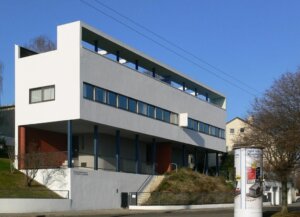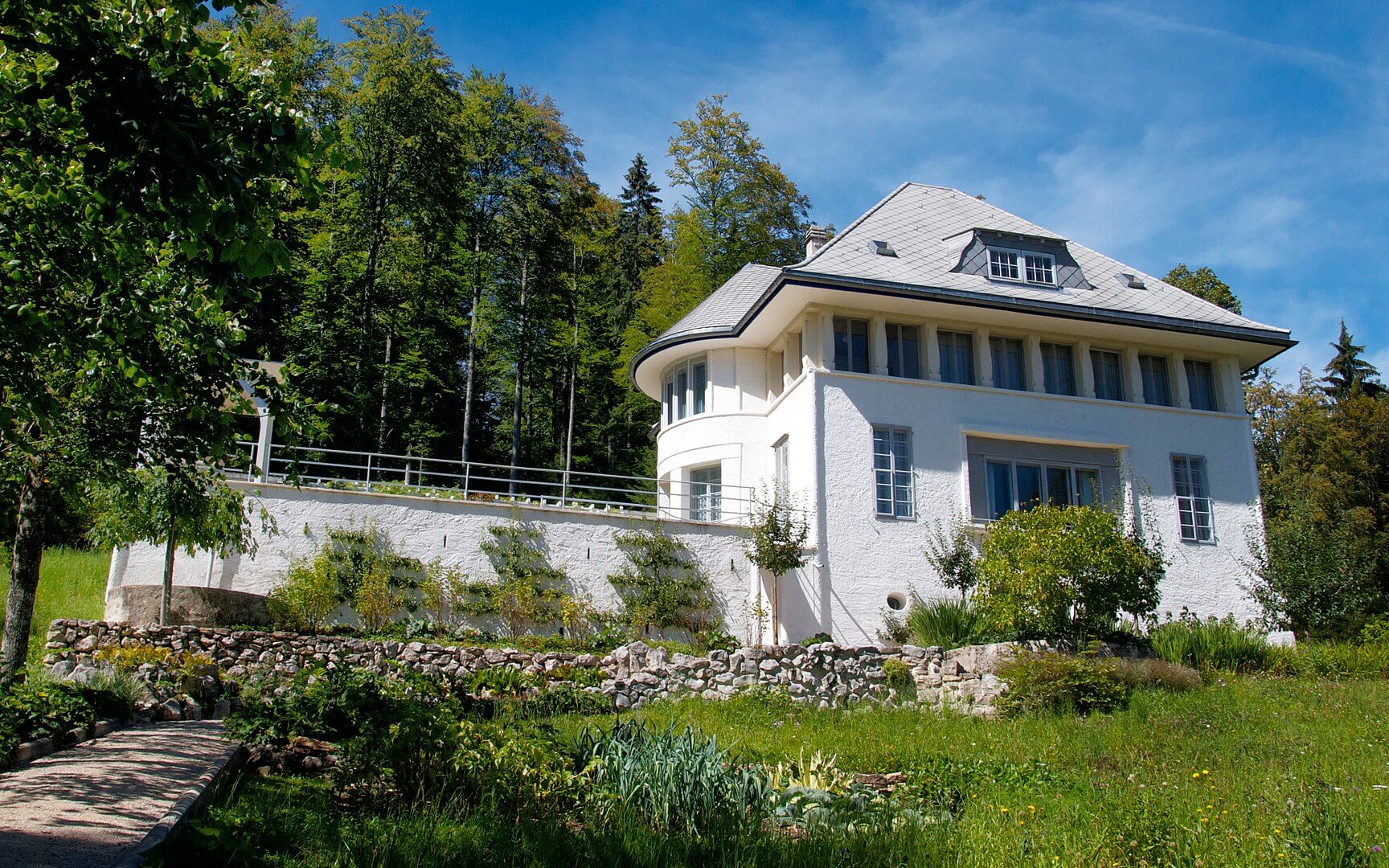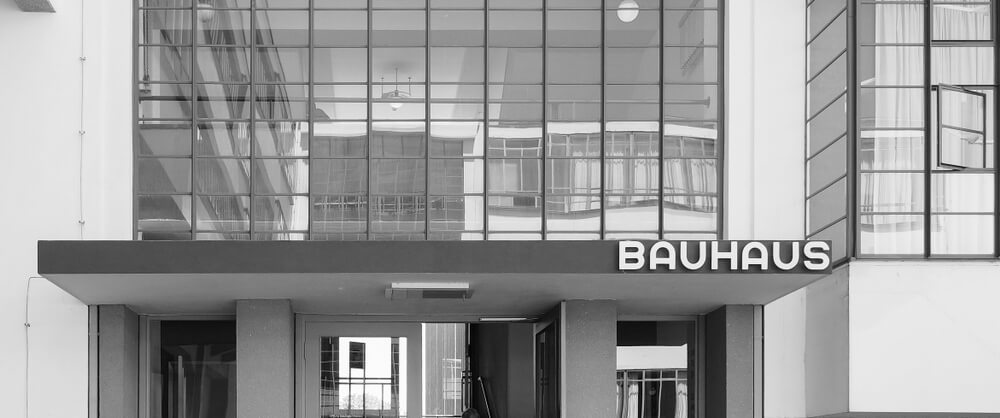Rationalist Architecture Today

The avant-gardes left an artistic legacy of great importance. Their influence is so strong that buildings follow similar designs and repeat the patterns. Let’s take a look at the rationalist architecture of today.
One factor to take into account is the appeal of this architecture. It appears in homes today both indoors and outdoors. This is due to the originality they portray, giving today’s home a sense of the past.
Architects continue to study the approaches of some artists such as Le Corbusier or Mies van der Rohe. This is due to the variety of designs that at the time aroused interest around the world.
The rationalist development in architecture

When it comes to rationalist architecture, the later part of the 20th century played an important role, as it spread to many countries. Although it has its roots in the 1920s, it was in the middle of this century that it reached its maximum splendor.
Some works such as Villa Savoye or Farnsworth House have positioned themselves as the most important references of this artistic style. The designs favor comfort and functionality, making this type of construction stand out from the crowd.
It was at the Bauhaus School where rationalism developed further. Its founder, Walter Gropius, was the source from which a long trajectory of this architectural trend emerged. This is where the principles of inspiration for modern works come from.
The 20th century was fruitful in developing new formulas for architecture.
How is it presented today?
This trend has been most used in developed countries. However, other countries have also introduced it. Keep in mind that it’s a simple and decisive system.
- Some residential buildings are built with a design based on straight lines and curves, without added decor. The most important thing is that a living space is provided and that it does not involve any major technical complication.
- Another interesting aspect is the construction speed. What is most in demand today is efficiency. Work is carried out as quickly as possible with elementary materials such as iron, brick, and concrete.
- Rationalism favors adaptability to the urban structure. The walls and corners try to subtly join the streets and the surroundings.
- On the other hand, there is the commercial use of this design. This is where rationalism prevails, although sometimes the natural image of the building is blurred.
Rationalism in public buildings

Rationalism exists, to a large extent, in public buildings. For example, those state buildings, university faculties, educational centers, etc.
All of them tend to use simple shapes, based on straight and basic lines, with a large number of windows, as can be seen in examples from the past such as Le Corbusier’s Weißenhofsiedlung or Walter Gropius’s Bauhaus building.
At the end of the day, these approaches adapt well to society’s needs and respond to the different uses that buildings may have.
It’s common to find numerous buildings of this category in any city.
A trend in keeping with modernity
Rationalist architecture today projects the same essence that it had in the mid-twentieth century, although some transformations have been made.
The architect is free to interpret these characteristics as they wish, but always fulfilling the unique and elementary purposes of this trend. For this reason, you’ll find works that are combined with other more technical approaches linked to minimalism.
The avant-gardes left an artistic legacy of great importance. Their influence is so strong that buildings follow similar designs and repeat the patterns. Let’s take a look at the rationalist architecture of today.
One factor to take into account is the appeal of this architecture. It appears in homes today both indoors and outdoors. This is due to the originality they portray, giving today’s home a sense of the past.
Architects continue to study the approaches of some artists such as Le Corbusier or Mies van der Rohe. This is due to the variety of designs that at the time aroused interest around the world.
The rationalist development in architecture

When it comes to rationalist architecture, the later part of the 20th century played an important role, as it spread to many countries. Although it has its roots in the 1920s, it was in the middle of this century that it reached its maximum splendor.
Some works such as Villa Savoye or Farnsworth House have positioned themselves as the most important references of this artistic style. The designs favor comfort and functionality, making this type of construction stand out from the crowd.
It was at the Bauhaus School where rationalism developed further. Its founder, Walter Gropius, was the source from which a long trajectory of this architectural trend emerged. This is where the principles of inspiration for modern works come from.
The 20th century was fruitful in developing new formulas for architecture.
How is it presented today?
This trend has been most used in developed countries. However, other countries have also introduced it. Keep in mind that it’s a simple and decisive system.
- Some residential buildings are built with a design based on straight lines and curves, without added decor. The most important thing is that a living space is provided and that it does not involve any major technical complication.
- Another interesting aspect is the construction speed. What is most in demand today is efficiency. Work is carried out as quickly as possible with elementary materials such as iron, brick, and concrete.
- Rationalism favors adaptability to the urban structure. The walls and corners try to subtly join the streets and the surroundings.
- On the other hand, there is the commercial use of this design. This is where rationalism prevails, although sometimes the natural image of the building is blurred.
Rationalism in public buildings

Rationalism exists, to a large extent, in public buildings. For example, those state buildings, university faculties, educational centers, etc.
All of them tend to use simple shapes, based on straight and basic lines, with a large number of windows, as can be seen in examples from the past such as Le Corbusier’s Weißenhofsiedlung or Walter Gropius’s Bauhaus building.
At the end of the day, these approaches adapt well to society’s needs and respond to the different uses that buildings may have.
It’s common to find numerous buildings of this category in any city.
A trend in keeping with modernity
Rationalist architecture today projects the same essence that it had in the mid-twentieth century, although some transformations have been made.
The architect is free to interpret these characteristics as they wish, but always fulfilling the unique and elementary purposes of this trend. For this reason, you’ll find works that are combined with other more technical approaches linked to minimalism.
All cited sources were thoroughly reviewed by our team to ensure their quality, reliability, currency, and validity. The bibliography of this article was considered reliable and of academic or scientific accuracy.
- Droste, Magdalena: Bauhaus. 1919-1933, Berlín, Taschen, 1990.
- Tournikiotis, Panayotis: Historiografía de la arquitectura moderna, Madrid, Mairea y Celeste, 2001.







